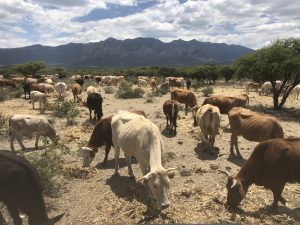Category: Nina Bethel
Tampopo was fantastic at catching and maintaining my interest in the cooking that occurred throughout the movie. I thought the movie was both aesthetically pleasing and heartwarming to watch others experience food. I found the scenes involving the lovers particularly interesting as it shows how food can be erogenous and a catalyst for a multitude of sensory experiences.
What techniques do filmmakers use that immerse the viewer and have them relate to the different tastes, senses, and values of the characters?
What was happening with passing a raw yolk back and forth?
Do you have any critiques of Tampopo?
I thought that the presentation was a very succinct delivery of information on perceiving everyday interactions with the food we consume under the queer and feministic lenses. I enjoyed her explorations into the deeper meanings of the stories we read. She provided perspectives I would have never considered by showing experiences of marginalized individuals through food; which is intricately woven into social, economic, gendered, or sexualized interactions that cause a number of emotions, presumptions, or environments. I wish that she would have gone more in-depth about the queer movement for African-American’s and other minorities that come from different cultures, different standards, and definitely different experiences than white women or white queer rhetoric. She had a bunch for POC! I just wish the discussion could’ve been shifted to give some much-deserved attention.
How have you come to understand the function of your family’s ranch?
Is the cattle ranch intended for subsistence consumption or commercial use?
Do you find that you associate your concepts and values of a family with your experiences on the ranch?
What were some of the most surprising parts of working on the farm?
What are some noticeable differences in ‘nature’ from Mexico compared to the United States? What are some not-so-noticeable differences?
Are there concerns in your family over climate change? Other challenges?
Do the daily tasks on your family’s ranch involve more machinery or manual labor? Have there been pressures to switch a certain way?
Who was your favorite cow? Why?
What were your top 3 moments where you felt uncomfortable or scared? Grossed out?
Would you say cows have distinctive personalities? Serious answers only, please.


- What is the main ingredient of the food item? Note: If one of your foods is raisin bran, please look at the ingredients list on the box of cereal. The dominant ingredient is always listed first (in this case, wheat).
- I found that my main ingredients consisted less of a singular food item and more of a vegetable and grain-based diet. In particular, I consumed substantial amounts of leafy vegetables, root veggies, rice, and especially beans. For the sake of time and a more digestible assignment, I will focus on spinach as my food item. Since freshman year in Environmental Connections, I have put constant thought into the foods I eat and the effects my food choices have on the environment.
- Research the most common production practice used to grow/raise this ingredient. What resources (energy, chemical, environmental, human) are required in its production?
- Producing different vegetables and grains that made their way to my plate involves intensive processes and transportation. When I put the most staple leafy vegetable, spinach, into search engines I found that California dominates the market for spinach production. The energy needed to power mechanical cultivation and irrigation methods like sprinklers are highly intensive on finite resources. High-density planting of spinach seeds is what allows such mass-harvests of spinach leaves. However, the high density of spinach leaves in a contained space demands constant pest and weed management, along with low tolerances to mechanical harvests. Ultimately, human labor is also required to maintain proper care and adequate (but not excessive) irrigation for cultivation.
- In what geographical location is this ingredient most commonly grown?
- California! Particularly, the Coachella Valley and the southern coast.
- Identify and describe significant social and environmental impacts resulting from production, procurement, distribution, and consumption.
- The storage of spinach also causes a significant environmental impact. Cooling systems are needed for both hand-picked and mechanically cultivated spinach in order to prevent damage, discoloration, and wilting of spinach. Fertilizer and pesticide use are not only intensive for soil and ecosystem composition, but also for the humans that handle hazardous chemicals or consume water that may be contaminated by chemical runoff or groundwater pollutants. In terms of distribution and consumption, the CDC has reported multiple outbreaks of food-related diseases that have been traced back to mishandled spinach production in California productions. This causes alarm among social groups, as well as government organizations that are in charge of ensuring that disease does not spread to impact human lives.
- Calculate the average miles each ingredient traveled in order to end up on your plate, bowl or cup.
- The average distance from California to Pennsylvania is 2, 729 miles, or approximately 40 hours of car transportation.
Recent Comments